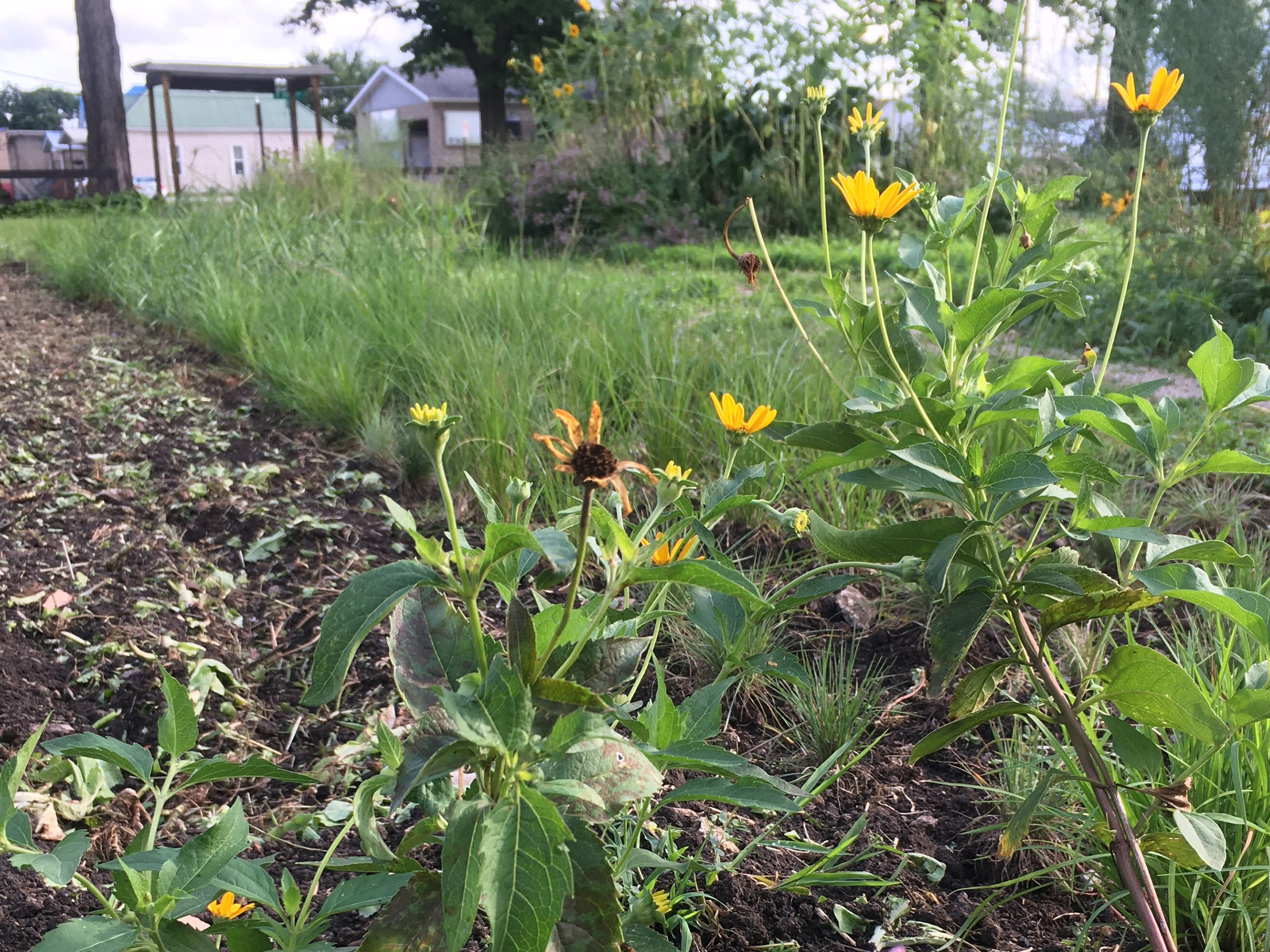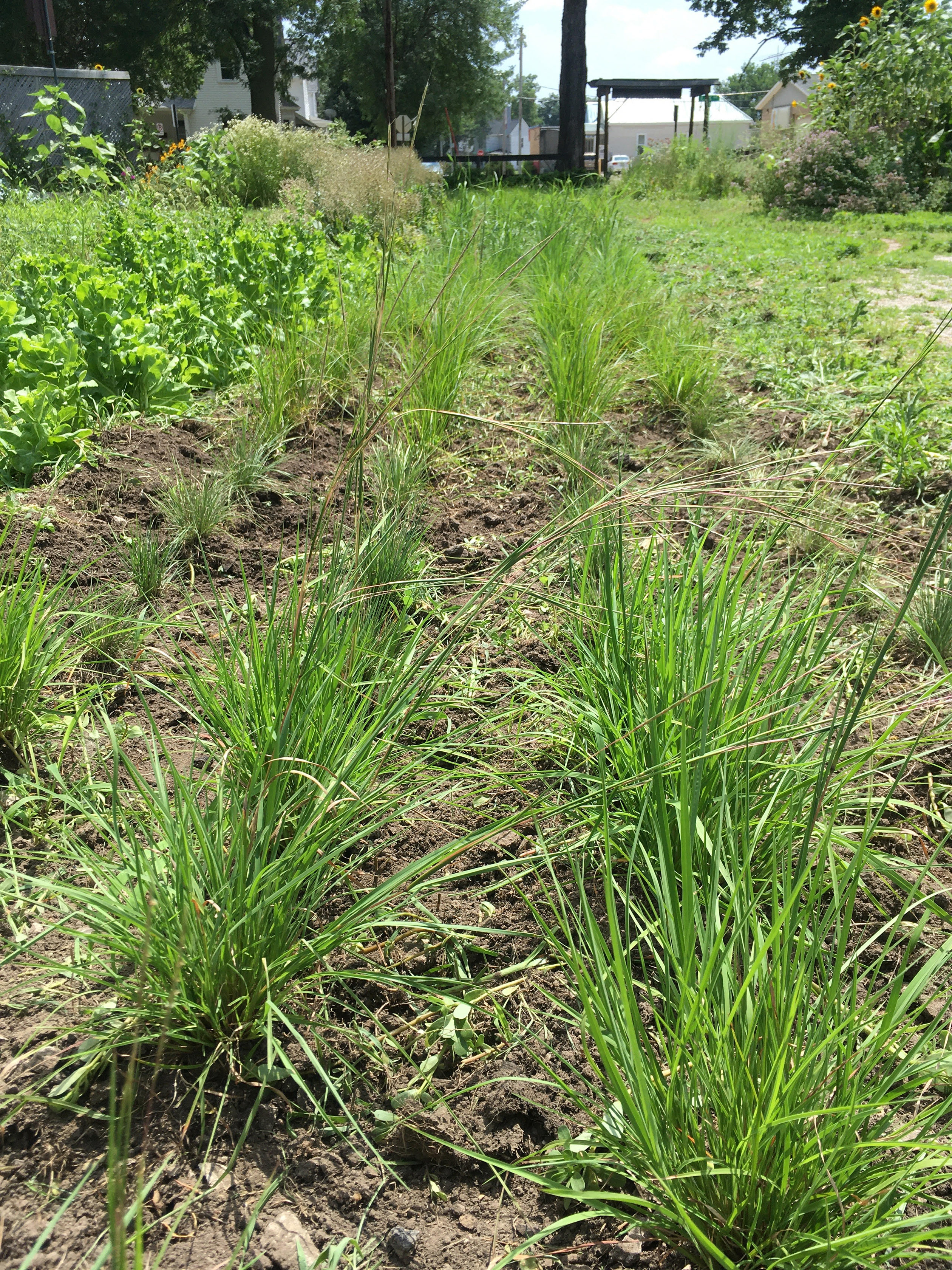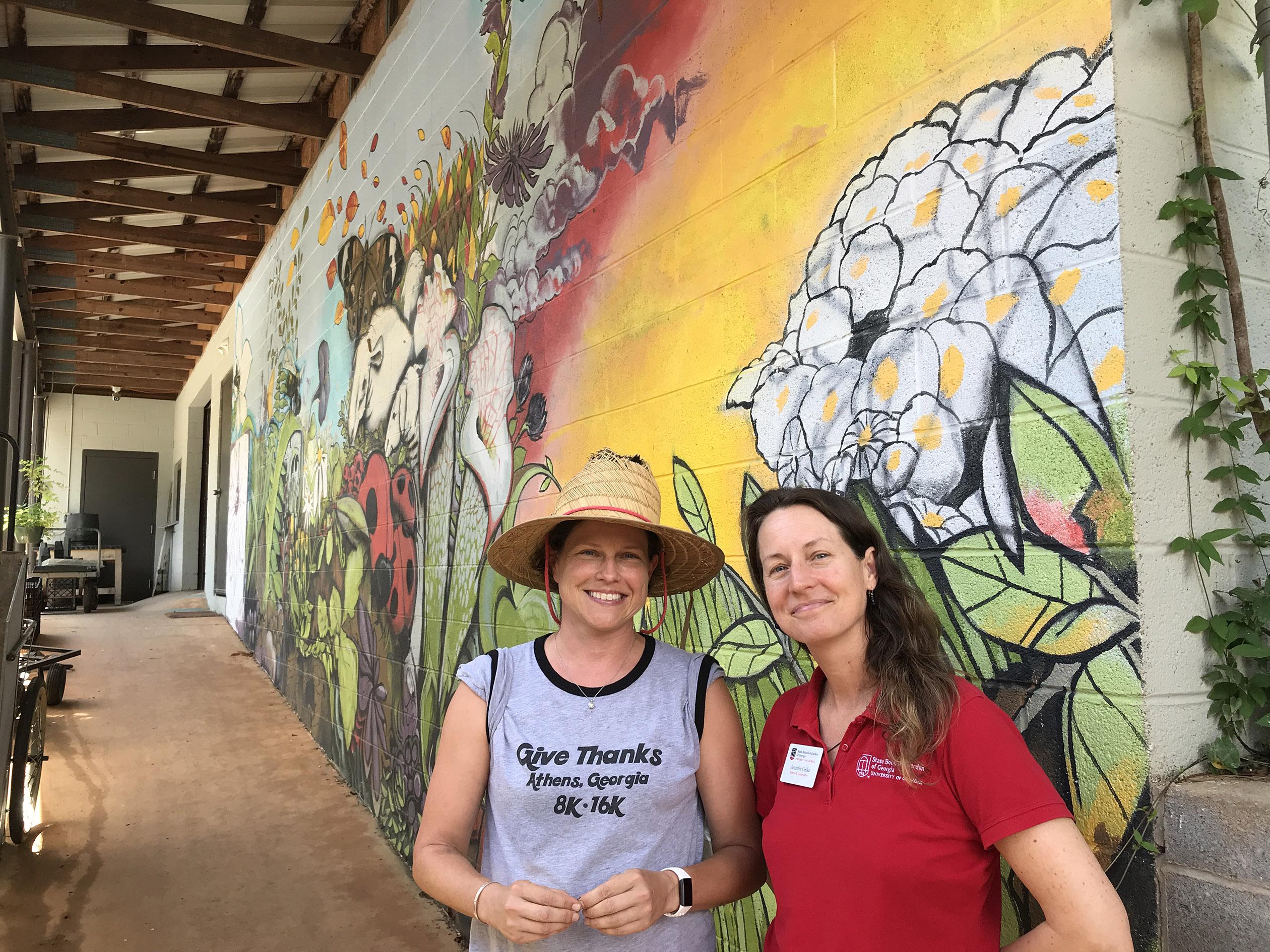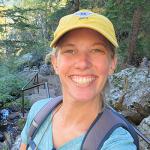Select updates from our team of restoration ecologists, entomologists, plant ecologists, and researchers.
The Xerces Society manages the largest pollinator conservation program in the world. We work with people from all walks of life to create habitat for bees, butterflies, and other beneficial insects—and hundreds of thousands of acres of flower-rich habitat have been planted. We also offer certifications: Bee Better Certified for farmers and food companies who are committed to supporting pollinator conservation in agricultural lands, and Bee City USA and Bee Campus USA for cities and colleges dedicated to making their community safer for pollinators.
With staff based in more than a dozen states, and offering a diverse array of expertise, it can be challenging to summarize the impactful work being done. We compile updates from pollinator team members into regular digests. In this edition, Sarah Nizzi offers an account of how habitat work has continued on an urban farm in Iowa despite the pandemic, and Nancy Lee Adamson reports on events held last year in Georgia that supported both gardeners and farmers.
Cultivating Hope Through Times of Uncertainty
Sarah Nizzi
There is no question the events of this year have left us all having to adapt to new situations, and let’s be honest, heartaches we didn’t see coming. Suddenly, the ability to maintain our average daily routine became a challenge. The pandemic has forced us to be more creative in the ways we accomplish tasks.
I have been teleworking for over six months now. Although, I can’t complain about the quality time spent with my dog, I sure miss being able to travel to farms, meet new people and have a hands-on approach to habitat projects within Iowa. I now spend more time on the phone and staring into a computer screen. Even in these times, people are still thinking about conservation and reaching out for advice.

Habitat for insects can be created in small places and bring big benefits. Twenty-five species of native grasses, sedges, and wildflowers were used to create beetle banks on the Cultivate Hope Urban Farm that also support additional beneficial insects and pollinators. (Photo: Zach D'Amico, Cultivate Hope Urban Farm.)
In the times prior to the coronavirus, we were able to host in-person field days and workshops all across the country. These events inspired participants to return to their communities and put what they learned into practice on their land or land they manage. A great example of this is the habitat work launched by Zach D’Amico, the manager of a 2-acre urban farm near downtown Cedar Rapids, Iowa, who attended one of our field days last fall.
Zach is the farm manager of the Cultivate Hope Urban Farm, an initiative of the nonprofit Matthew 25. After learning about habitat projects that support beneficial insects as well as pollinators during the field day, Zach applied for a grant to get funding through SARE for plant materials, and reached out to Xerces for technical assistance. He was interested in planting beetle banks using native grasses, sedges and wildflower plugs. He wanted the benefits of organic pest control and the aesthetics to beautify the farm. Another goal is to use the banks as an educational tool for their youth development program and community gardeners to teach about organic pest control. We began the planning process and then, bam, the pandemic hit. Farm visits were impossible, which forced us to figure out how to work together remotely. We exchanged several emails back and forth going over site preparation, native plant nurseries, planting dimensions, native species composition, you name it. I gave him the tools necessary to make informed decisions and he was off.
Months went by, the pandemic gradually worsened, and I began to wonder if he was able to get his project off the ground? Would he be able to have volunteers to help plant the plugs? Would he have volunteers to weed the beetle banks throughout the growing season? Would the native plant nursery have the inventory to provide him with the plants he requested? I checked in and the news couldn’t have been any better! “They (beetle banks) are growing wonderfully and lots of the forbs are already flowering and attracting beneficials… coolest thing I’ve done on the farm so far” was just one example of the many enthusiastic responses I received. Zach was able to plant 500 square feet of native plants amongst the farm’s vegetable production areas.

Beetle banks were created in late May the Cultivate Hope Urban Farm near downtown Cedar Rapids, Iowa. The ground is raised slightly and planted with native bunch grasses and sedges, which provide shelter for ground beetles and beneficial insects. (Photo: Zach D'Amico, Cultivate Hope Urban Farm.)
It is extremely rewarding to help someone achieve their conservation goals, especially when we all are facing obstacles and are adjusting to new ways of working. Knowing we can still be successful with conservation work on the ground, remotely, is elating. Big or small, every action counts. Despite the challenges, the desire to diversify agricultural areas in urban and rural settings to support wildlife, soil health, and water quality has not gone away. Perhaps now, more than ever, we realize we can still collaborate and together, we can make positive change happen.
Partnering to Protect Southeastern Biodiversity
Nancy Lee Adamson
The southeastern United States has been recognized as a global biodiversity hotspot with more than 1,800 endemic species. Xerces has been working to support conservation in the region by partnering with local conservation organizations to give pollinator conservation workshops.
Last summer, I worked with Xerces’ Rachel Dunham (Community Engagement Coordinator), Phyllis Stiles (Bee City USA coordinator, now retired), and Aimée Code (Pesticide Program Director), as well as several regional organizations to organize pollinator gardening workshops in Athens and Atlanta, Georgia. Co-sponsors Greater Atlanta Pollinator Partnership (GAPP) in Atlanta and State Botanical Gardens of Georgia (SBG) helped us to facilitate presentations about Monarchs Across Georgia by Susan Meyers, Connect to Protect by Sean Cameron, and Beecatur (Decatur, a Bee City USA) by Peter Helfrich. Dennis Krusac, who coordinates GAPP and is an Endangered Species Specialist with the US Forest Service, highlighted common pollinators of Georgia. We also heard from Heather Alley of SBG about native plants and Becky Griffin, an entomologist at the University of Georgia (UGA), about the Great Georgia Pollinator Count.

Heather Alley and Jennifer Czeska grow and promote native pollinator plants at the State Botanical Garden of Georgia in Athens. The botanical garden hosted an urban pollinator workshop presented by the Xerces Society. (Photo: Xerces Society / Nancy Lee Adamson.)
Later in the year (November), in my role as a partner biologist with the USDA Natural Resources Conservation Service, I had the chance to reach a different audience in Georgia. I worked with Georgia NRCS State Biologist Catherine Magee to plan and present two programs for NRCS staff and partners who support conservation plantings on working farms. Besides supporting bees and other pollinators, conservation plantings support diverse predators and parasitoids that consume crop pests and help reduce or eliminate pesticide use. The training days also provided resources and guidance to improve habitat management supported by Farm Bill programs. Guest presenters included Keren Giovengo, of UGA EcoScapes Sustainable Land Use program, talking about native plants and pollinators; UGA Entomology Department Head Kris Braman and Assistant Professor Jason Schmidt speaking about common predators and parasitoids of crop pests; and Tony Gobert, of Gwinnett Technical Community College, on how farm plantings support integrated pest and pollinator management (IPPM).
I am looking forward to continuing collaboration with Catherine Magee, this time on a native planting she is coordinating with other NRCS State Biologists in the southeast at the Jimmy Carter Plant Materials Center in Americus, Georgia. As part of a new conservation plan that includes converting a large area of turf into a native shrub and tree identification site (a mini arboretum) for training staff and partners, a diverse native hedgerow will also be installed. Shrub and tree plantings support pollination and pest management, reduce wind and erosion, and can provide additional income with berries or ornamental cut flowers and stems. Planting shrubs and trees can also help ensure more success than seeded grasses and forbs on sites with tough weed issues or for organic farmers who do not use conventional herbicides. Combined with wildflowers and grasses, these native hedgerows provide excellent habitat for diverse wildlife through the year.
Interested in supporting conservation in your community? Check out the beautiful new Xerces Classroom videos on YouTube that Rachel Dunham is developing in collaboration with Xerces staff scientists.

Aalia McClendon, a District Conservationist with the Georgia NRCS (a Xerces Society conservation partner), talks during a training day about pollinator habitat enhancements done with Farm Bill support. (Photo: Xerces Society / Nancy Lee Adamson.)
Further Reading
Learn more about the Xerces Society’s Pollinator Conservation Program.
Find out how you can help Bring Back the Pollinators.




